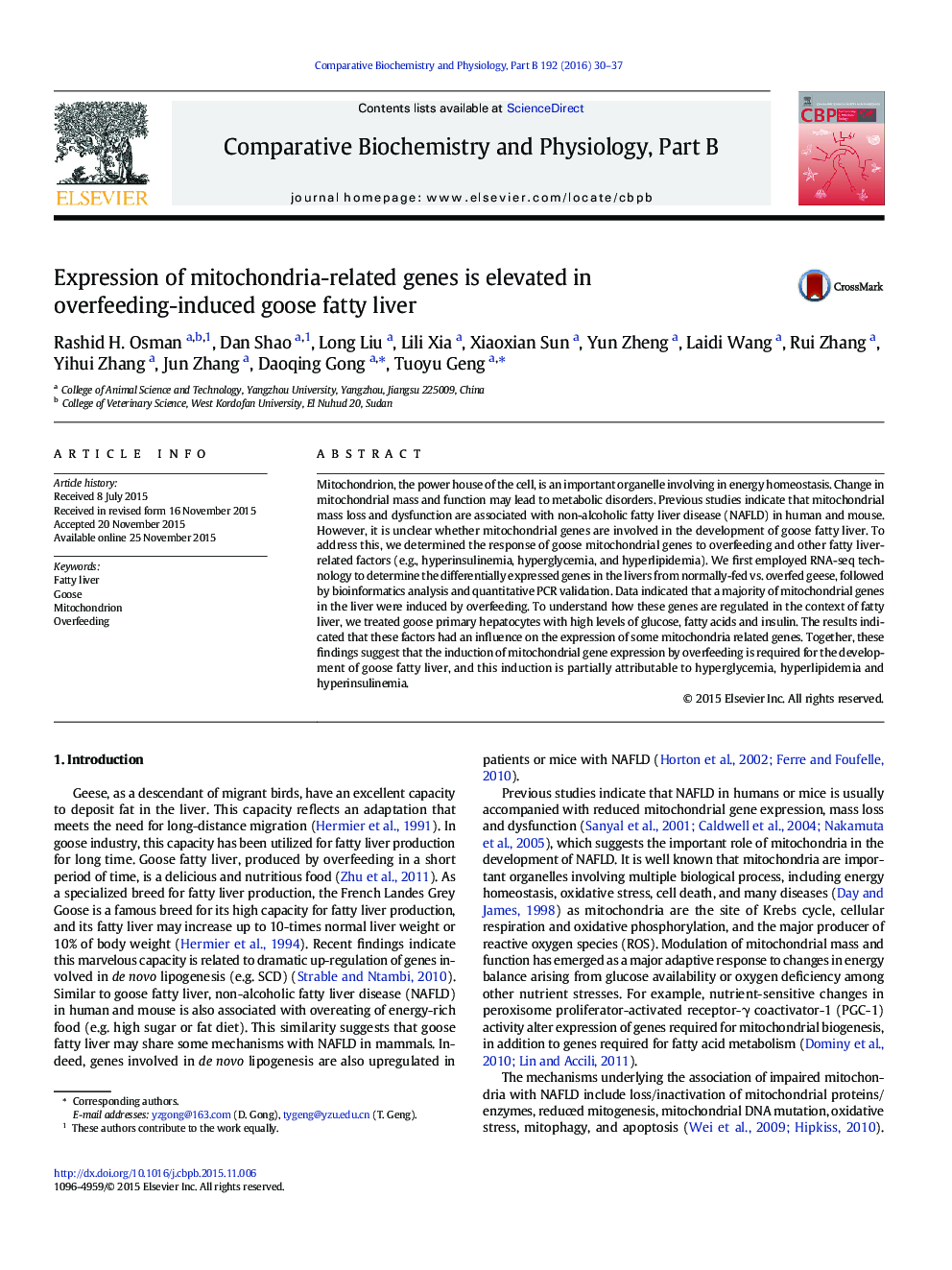| Article ID | Journal | Published Year | Pages | File Type |
|---|---|---|---|---|
| 1975101 | Comparative Biochemistry and Physiology Part B: Biochemistry and Molecular Biology | 2016 | 8 Pages |
Mitochondrion, the power house of the cell, is an important organelle involving in energy homeostasis. Change in mitochondrial mass and function may lead to metabolic disorders. Previous studies indicate that mitochondrial mass loss and dysfunction are associated with non-alcoholic fatty liver disease (NAFLD) in human and mouse. However, it is unclear whether mitochondrial genes are involved in the development of goose fatty liver. To address this, we determined the response of goose mitochondrial genes to overfeeding and other fatty liver-related factors (e.g., hyperinsulinemia, hyperglycemia, and hyperlipidemia). We first employed RNA-seq technology to determine the differentially expressed genes in the livers from normally-fed vs. overfed geese, followed by bioinformatics analysis and quantitative PCR validation. Data indicated that a majority of mitochondrial genes in the liver were induced by overfeeding. To understand how these genes are regulated in the context of fatty liver, we treated goose primary hepatocytes with high levels of glucose, fatty acids and insulin. The results indicated that these factors had an influence on the expression of some mitochondria related genes. Together, these findings suggest that the induction of mitochondrial gene expression by overfeeding is required for the development of goose fatty liver, and this induction is partially attributable to hyperglycemia, hyperlipidemia and hyperinsulinemia.
